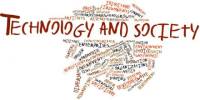Even today, many people around the world do not have access to clean water. The World Health Organization (WHO) estimates that at least 1.8 billion people drink water that has been tainted with excrement and that by 2040, a sizable section of the world would experience water stress due to a lack of drinking water resources.
According to the United Nations Children’s Fund (UNICEF), cholera and other infections like diarrhea cause almost 1,800 children to die every day. Therefore, it is crucial that we find effective and affordable methods of water purification.
With a unique water purification filter that combines titanium dioxide (TiO2) nanowires and carbon nanotubes powered by nothing but sunshine, a team of scientists at EPFL lead by László Forró has achieved just that.
The researchers first demonstrate that in the presence of sunshine, TiO2 nanowires can effectively filter water on their own. But when carbon nanotubes and nanowires are combined, a composite material is created that provides an additional layer of purification by pasteurizing the water and eliminating human pathogens such big viruses and bacteria.
The theory is that the filter produces a class of chemicals known as Reactive Oxygen Species when UV light from the visible range of sunlight strikes it (ROS). These are known to be efficient pathogen destroyers and include oxygen (O2), hydroxide (OH), and hydrogen peroxide (H2O2).
The “gold standard” for bacterial survival studies, E. Coli, was used by the researchers to test their device; however, it should also work with other bacterial pathogens, including Campylobacter Jejuni (a common diarrhea-inducing pathogen in the developed world), Giardia Lamblia (a microorganism that causes the intestinal infection giardiasis), Salmonella, Cryptosporidium (causes diarrheal cryptosporidiosis), the Hepatitis A virus, and Legionella Pneumophila (causes Legionnaires’ disease).
In a close collaboration between chemists, physicists, and biologists, we have developed a very efficient water purification device, which does not need any energy source but sunlight. Our prototype can supply clean drinking water even at remote places to small populations and could be easily scaled up. It is a great achievement and an important “side-product” of this project is that it has attracted a large number of talented and motivated students who care for environmental issues, for sustainability.
László Forró
The gadget is extraordinarily good at getting rid of all pathogens from water, and it also shows promise at getting rid of micropollutants like pesticides, drug residues, cosmetics, and other things.
“In a close collaboration between chemists, physicists, and biologists, we have developed a very efficient water purification device, which does not need any energy source but sunlight,” says Forró.
“Our prototype can supply clean drinking water even at remote places to small populations and could be easily scaled up. It is a great achievement and an important “side-product” of this project is that it has attracted a large number of talented and motivated students who care for environmental issues, for sustainability.”
The researchers provide a prototype of the filter in their study, which was published in the Nature partner journal Clean Water, and offer recommendations for additional enhancements.
“I am convinced that it will create a strong follow-up in versatile scientific communities and hopefully funding agencies,” says Endre Horváth, the lead scientist on the project.
















